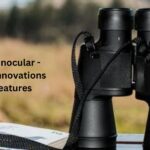Exploring history serves as the foundation for understanding, both the present and the future. It is the topic that reveals the answer to all the questions of existence, science, nature, humans and the list goes on. It is one of the core subjects that still needs further digging in today’s technological world. History reveals all the hidden secrets that fascinate generations. It has a direct connection with science as it backs all the scientific inventions of the modern era. Many institutions are working in this domain, connecting every bit of science and history to learn more about life. Fernbank Science Center is one of those museums that explores history by taking a unique approach. In this blog, we will discuss the importance of Fernbank Science Center Atlanta and will give you a complete walkthrough of the Natural Science Center guide.
Fernbank Science Center – History
If you are living in Atlanta and are a science enthusiast, you must have visited Fernbank Science Center. For newcomers, the Fernbank Science Center is an educational facility that offers science programs for local students, pre-K-12. It was founded in December 1967 on the vision of promoting the knowledge of science and since then, it has been contributing to the world of science. It is now a museum, learning hub, historical center, and woodland complex in Georgia.
In today’s world, the Fernbank Science Center provides its visitors with a whole new experience with unique historical findings and information. It has many materials for exploration and provides comprehensive understanding through its laboratories. Fernbank Science Center has its observatory for a deep dive into celestial events across various domains and a planetarium for the presentation of these findings. Both are open for public shows for specific occasions.
Fernbank Science Center Key Highlights
Speaking of exploration and historical events, the Fernbank Science Center has diverse things to explore. Here are some key highlights of the Fernbank Science Center:
- Dinosaur Skeletons
- Rocks & Minerals
- Tektites
- Electron Microscope Lab
- Aeronautics Education Laboratory
These are the top features of the Fernbank Science Center that make this museum unique for visitors, allowing them to explore the marvels of history. The skeletons of dinosaurs provide a real-life model of what those creatures looked like in the past. It has a lot of history and science waiting to be explored.
Read More Stories:
Physical Science Exploring the Fundamentals of Our Physical World
How Life Science is Evolving in the Modern Age
Molecular mechanisms that control circadian rhythm Nobel prize in medicine
Unveiling the World of Nematodes
Planetarium Shows
The Jim Cherry Memorial Planetarium is one of the major highlights of the Fernbank Science Center. It takes the visitors into an immersive world that promotes learning and makes history fun to explore. The Planetarium was built in the 1960s and it is the largest presentation state across the state of Georgia with a 500-seat theater.
The Jim Cherry Memorial Planetarium, in the Fernbank Science Center Atlanta, hosts multiple events and is equipped with a 70-foot star projector that provides a next-gen immersive experience to the viewers.
There are other hundreds of special effects projectors that make it one of the largest planetariums across the United States. Speaking of the planetarium’s spotlights, it is also the first owned and operated public school system in the US, located in the Fernbank Science Center Heaton Park Drive Atlanta.
Observatory and Astronomy Programs

The Fernbank Science Center holds significant value due to its observatory and astronomy programs. It has a separate department known as Fernbank Linking Ideas and Networking Kids with Science (LINKS) which was established in 2002. It hosts comprehensive technology programs in various fields such as Robotics and Astronomy.
In Georgia, this Fernbank Science Center team hosts great competitions in the science domain, enhancing the knowledge and expertise of the Youth in modern technology, historical events, and scientific findings.
Interactive Activities – Fernbank Science Center Exhibits
Several science exhibitions are a part of the Fernbank Science Center. Visitors can perform multiple activities at the Fernbank Science Center exhibits, some with tickets while others are free. Fernbank Museum has lots of exhibits that cover a bunch of cool topics about nature and history. Some of them include Fernbank NatureQuest, Dinosaur Plaza, Giants of the Mesozoic, A Walk Through Time in Georgia, Reflections of Culture, Conveyed in Clay: Stories from St. Catherines Island, Our Favorite Things, World of Shells, Fantastic Forces, Sky High, Star Gallery, and STEAM Lab. Each exhibit is like a different adventure, letting you explore and learn interesting things at the museum.
Georgia Aquarium
For all the sea lovers out there, Situated in Atlanta, part of the Fernbank Science Center, the Georgia Aquarium has been captivating visitors since its opening in 2005. While it held the title of the world’s largest aquarium until 2012, it remains the United States’ largest and the fourth largest globally. Seven galleries house hundreds of species and over 11 million US gallons of water, creating a mesmerizing experience.
Movies & Activities
Exploring science is made fun for everyone by the team at Fernbank Science Center. There are several theaters and game activities for both adults and kids to enjoy. For instance, the dinosaur exploration at Fernbank Theme Parks is fun to watch. Kids can watch nature animations and films across the Fernbank Museum.
Fernbank Forest

Fernbank Science Center is an excellent venue for the explorers as it has the Fernbank forest which is a 65-acre old-growth forest. It has relatively old natural landscapes across the region that offer extensive opportunities for scientists and nature learners in the region. White oak, tulip poplar, loblolly pine, and diverse other species are part of this forest.
Key Takeaways
To sum it up, the Science Center at Fernbank is all about helping people understand and appreciate science and technology. They do this by showcasing stuff like dinosaur skeletons, rocks, minerals, and tektites, and even having special labs for aeronautics and electron microscopes. When you visit Fernbank, you not only get to see these amazing things but also learn about the order and harmony in the natural world. It’s a fun and educational experience that leaves you with a greater understanding of the wonders of science.
FAQs
What are Fernbank Science Center ticket prices?
Ticket prices cater to different age groups: $25.95 for adults (ages 13-64), $24.95 for seniors (ages 65+), and $23.95 for children (ages 3-12). The prices can vary for members, do check your plan here.
What are Fernbank Science Center hours?
Fernbank with our daily opening hours from 10 a.m. to 5 p.m. To ensure your seamless experience, please remember that tickets must be purchased in advance.
What is the difference between Fernbank Museum and Science Center?
While the Science Center is managed by the DeKalb County School District, the Fernbank Museum of Natural History operates independently as a private museum at 767 Clifton Rd, Atlanta, GA 30307.
Why is it called Fernbank?
It’s called Fernbank because a long time ago, a lady named Emily Harrison loved a special spot in the forest by a creek with lots of ferns. She liked it so much that she named it “Fernbank.” Now, even though she’s not around, Fernbank Museum keeps her love for nature alive.
Does Fernbank have an observatory?
Yes! It is located between Decatur and Atlanta and owns a 0.9144 m (36.00 in) Cassegrain telescope housed beneath a 10 m (33 ft) dome.
Is Fernbank fun for adults?
This museum is great for kids because the exhibits are made more for them than for grown-ups. The museum also has extra things like an Imax theater, a cafe, and a gift shop, which make the visit even better for science explorers.
When was Fernbank built?
The Fernbank Museum was opened to the public in October 1992.
When was the Fernbank Science Center built?
Fernbank Science Center was completed and dedicated in December 1967















